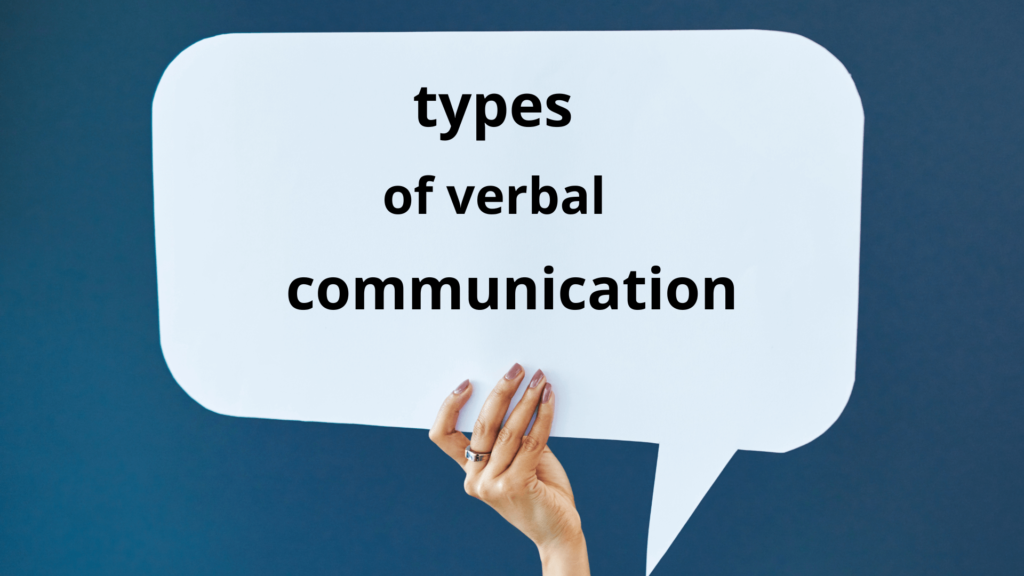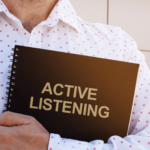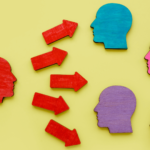Exploring Effective Types of Verbal Communication: A Comprehensive Guide

In this article, we will delve into the various types of communication and highlight the importance of honing your communication skills.
Whether it's verbal, non-verbal, written, or visual communication, mastering the art of expressing ideas and emotions is crucial in both personal and professional settings.
Join us as we navigate through the intricacies of communication behaviors, interpreting verbal and nonverbal cues, and discovering effective ways to improve your verbal communication skills.
Get ready to unlock the power of effective communication and enhance your ability to exchange information with clarity and empathy.
Types of Communication
An integral part of expressing oneself effectively is understanding the various types of communication. Being able to interpret both spoken and non-verbal cues allows for the successful exchange of messages.
Verbal communication involves the use of words in face-to-face conversations, phone calls, and public speaking. Non-verbal communication encompasses body language, facial expressions, and other such gestures.
Written communication enables the sharing of information through written words, and visual communication involves the utilization of images, graphs, and other visual aids.
Exploring and mastering these communication types is essential in order to accurately express one's thoughts and feelings.
Effective communication is a valuable skill that can significantly benefit personal and professional life. Through the mastery of communication, individuals can convey their ideas and feelings in a clear and comprehensive manner.
Not only is verbal communication important, but the ability to interpret non-verbal cues is also essential in decoding messages. Knowing the nuances of such behaviors such as questions, opinions, and blame can help to engage in effective conversations.
By honing verbal communication abilities, individuals can create meaningful connections and foster better relationships in both personal and professional contexts.
Types of communication are vital to the effective communication process.
Verbal communication involves the use of spoken words to express oneself. This can be done in face-to-face conversations, phone calls, and public speaking events. Non-verbal communication, on the other hand, encompasses body movements, eye contact, and other non-verbal cues.
Understanding these different types of communication allows individuals to express themselves in various ways and adapt their communication styles to different scenarios. By acknowledging the importance of each type of communication, individuals can improve their overall communication abilities and effectively communicate their ideas.
When exploring successful methods of speaking, it is important to consider the various types of communication. Verbal communication encompasses speaking words in face-to-face conversations, phone calls, and public speaking engagements.
Additionally, non-verbal communication plays a significant role in conveying messages. This involves body language, facial expressions, and other non-verbal cues.
Moreover, written communication permits the exchange of information through written words, while visual communication utilizes images and other visual aids to convey messages.
By comprehending and utilizing these different types of communication, individuals can enhance their capacity to effectively express themselves and engage in meaningful conversations.
Verbal Communication
Interaction between humans is largely dependent on communication, and verbal exchange plays an integral role in both personal and professional contexts. Speaking is a powerful tool that allows individuals to share their thoughts, ideas, and emotions with others.
To engage in meaningful conversations, deliver persuasive speeches, and take part in phone calls, it is necessary to hone strong verbal skills.
Developing these social abilities can help enhance one's ability to articulate ideas coherently, listen actively to other’s perspectives, and adjust one’s communication style depending on the situation.
One should not underestimate the importance of vocal components such as tone, pitch, and tempo. These can greatly influence the way a message is perceived.
Utilizing a calm and calming tone can show empathy and understanding, while a confident and firm voice can command attention and demonstrate authority.
Moreover, it is essential to be mindful of non-verbal cues, such as facial expressions and body language, to ensure that the message is correctly interpreted.
Verbal proficiency is especially advantageous in the professional environment. It enables individuals to reveal their expertise, persuade others, and build trust with colleagues and customers. In team settings, clear and concise communication is essential for successful collaboration.
Additionally, mastering verbal communication can help one handle tricky situations, like giving feedback or dealing with disputes, with tact and diplomacy. Through these skills, one can become more effective and contribute to a positive work atmosphere.
One should not forget that effective verbal communication is not only about speaking but also about listening.
Paying attention to others’ points of view enables one to comprehend them, acquire information, and respond suitably.
Being an active listener also allows one to identify both verbal and non-verbal cues that can help one better understand the communication process.
By practicing active listening, one can show respect and empathy, establish meaningful connections, and avoid miscommunication.
Non-Verbal Communication
Interacting without words can be a potent way to supplement and enhance spoken language. This type of communication involves various elements such as facial expressions, postures, and gestures to convey messages.
These non-verbal cues can have a significant influence when it comes to expressing emotions, opinions, and intentions. For instance, a smile can suggest friendliness and warmth, while crossed arms might suggest defensiveness or disagreement.
Being aware and interpreting these signals are essential for successful conversations, as they provide an additional layer of context to what we are talking about.
Non-verbal communication goes beyond just body movements and facial expressions.
The way we articulate our words, such as our tone of voice, pitch, and volume, can also carry different connotations. For example, a gentle and calming tone can indicate empathy and comfort, while a loud and sharp tone can point to anger or agitation.
Paying attention to these subtle nuances can allow us to better understand the speaker's message and purpose.
Eye contact is another important aspect of non-verbal communication. It can create a connection between people and demonstrate interest, attention, and respect. It can also signify honesty and authenticity.
On the other hand, averting one's gaze may suggest discomfort, disinterest, or deceit. Knowing the role of eye contact in communication can help us foster a strong bond and build trust with others.
Oral Communication
Conveying thoughts, ideas, and emotions is an integral part of human connection. From daily conversations to formal presentations, oral expression is a fundamental tool for effective communication in both personal and professional settings.
To ensure successful communication, it's essential to master the art of speaking, taking into account various factors such as tone of voice, clarity of speech, and non-verbal cues.
In addition to face-to-face interactions, advances in technology have enabled individuals to engage in direct speech through various platforms, such as phone calls, video conferences, and virtual meetings.
This allows for real-time communication and the bridging of physical divides. With oral communication, people can connect and collaborate effectively, regardless of location.
To develop effective oral communication skills, one must practice conscious listening, engaging in meaningful conversations, and seeking feedback.
It is also important to be mindful of cultural differences and adjust communication styles accordingly.
By continuously refining their speaking abilities, individuals can enhance their overall communication abilities and navigate various social and professional situations with ease.
Oral communication is a powerful tool for building meaningful connections and conveying thoughts, ideas, and emotions.
Through conscious effort and practice, individuals can hone their speaking skills and master the art of direct speech.
Written Communication
The capacity to express ourselves through writing holds a paramount place in our lives.
Through emails, text messages, formal letters, and reports, written words offer a clear means of communication.
To maximize its effectiveness, precision, fluency, and proper grammar are all essential. Different writing styles and formats accommodate specific intentions, whether it is academics, creativity, business, or technical writing.
Being able to tailor our writing to the desired outcome is indispensable.
Through written communication, we can take our time to carefully construct our thoughts and messages. Unlike a verbal exchange, it affords a chance to reflect and edit our words, making sure our message is coherent and impactful.
Additionally, it enables us to communicate over long distances, with the ability to save and share messages at a later date.
This makes it a priceless tool for remote collaboration, documentation, and record-keeping.
The digital age has further increased the prevalence of written communication. Through emails, social media, and online platforms, information is exchanged rapidly and conveniently, yet this can also lead to misinterpretation due to the absence of verbal and non-verbal cues.
Therefore, it is essential to be aware of the tone and clarity of our written communication in these contexts.
By understanding the power and nuances of written communication, individuals can sharpen their ability to express themselves, accurately convey information, and build meaningful connections with others.
Mastering the different types of communication is key to successful communication in a variety of settings.
Visual Communication
Visual expression is a mighty way to make use of images, graphs, and other visual elements to share messages.
It has a noteworthy role in effective exchange by developing understanding and participation.
Visual expression can take different forms, such as diagrams, infographics, charts, and videos. These visual aids can simplify intricate information, making it easier for the viewers to comprehend and recall.
By including visuals in presentations or documents, people can effectively communicate their ideas and enhance the overall communication process. Furthermore, visual expression permits creativity and customization, allowing individuals to articulate their opinions in creative and interesting ways.
Apart from being visually appealing, visual expression can be an international language that surpasses dialect boundaries.
It can be particularly beneficial when interacting with people who converse in different languages or come from different cultural backgrounds.
Visuals can communicate emotions, concepts, and information in a manner that words alone may not be able to.
By utilizing symbols, colors, or images, visual expression can evoke powerful reactions and create lasting memories.
In our digital era, where attention spans are shorter and information saturation is commonplace, visual expression can help capture and sustain the viewers' attention.
It can efficiently convey messages rapidly and succinctly, leaving a permanent impression on the audience.
Types of visual communication such as infographics, videos, and images can be powerful tools to capture and maintain attention.
Effective Communication
In a world that moves ever faster, the capacity to communicate well has become increasingly important.
The ability to articulate thoughts, feelings, and ideas accurately can be a key factor in both personal and professional interactions.
To help individuals develop their communication skills, a comprehensive overview of effective methods is essential.
By mastering the art of expression, people can create meaningful connections, resolve conflicts, and foster positive relationships.
Understanding the various types of interaction, such as verbal, non-verbal, written, and visual, allows them to choose the most appropriate approach for each situation.
Effective communication also necessitates active listening, empathy, and the ability to read both verbal and non-verbal cues.
Having strong communication abilities can empower individuals to effectively express themselves, understand others better, and navigate various social and professional contexts with confidence and success.
Effective communication is an invaluable skill that can have a considerable impact on personal and professional success.
Be it conveying ideas during a business presentation, attentively listening to a friend's issues, or negotiating with a colleague, the ability to communicate effectively is paramount.
By improving their communication abilities, people can empower themselves to build trust, articulate their thoughts and sentiments, and collaborate productively with others. This comprehensive guide will explore different successful methods of speaking, providing practical tips and tactics to upgrade communication skills.
From comprehending the different types of communication to honing the art of expression, this article will provide readers with the resources they need to become competent communicators in any context.
By dedicating time to bettering communication skills, individuals can unlock new opportunities, strengthen bonds, and reach greater success in both their personal and professional lives.
Mastering the Art of Communication
Grasping the art of talking is a must for successful interpersonal interactions. It requires sharpening various techniques and methods to clearly and compassionately communicate ideas, feelings, and thoughts.
By grasping the different types of communication, such as oral, non-verbal, written, and visual, we can investigate how every technique contributes to successful communication. Moreover, discerning both verbal and nonverbal signs and recognizing their relationship allows us to augment our communication skills.
Through this complete guide on exploring different effective approaches to speaking, we can delve into the methods and techniques essential for mastering the art of communication.
Successful communication has a substantial role in both personal and professional life. It allows individuals to express themselves openly, establish meaningful ties, and generate positive relationships.
By mastering the art of communication, we can effectively communicate our beliefs, views, and feelings, thus ensuring that our message is comprehended and accepted as intended.
This skill is especially essential in professional settings, where successful communication can promote collaboration, teamwork, and productivity.
In addition, in personal relationships, effective communication fosters mutual respect, trust, and understanding.
Grasping the art of communication involves not only the capacity to express oneself but also the capability to actively listen.
Active listening involves fully concentrating on the speaker, comprehending their point of view, and responding accordingly.
By actively listening, we can show empathy, affirm the speaker's emotions, and foster constructive dialogue.
This aspect of communication is especially crucial when engaging in conversations that contain differing opinions or conflicts.
By actively listening, we can create an atmosphere favorable to open and respectful communication.
To master the art of communication, it is essential to hone verbal communication skills. This involves using the right language, attitude, and body language to successfully express our message.
We can boost our verbal communication abilities by practicing public speaking, engaging in debates, and taking part in group discussions.
Additionally, utilizing effective questioning techniques, such as open-ended questions, can promote deeper conversations and inspire others to share their ideas and thoughts.
By persistently refining our verbal communication skills, we can become more confident and persuasive communicators.
Interpreting Verbal and Nonverbal Communication
Interpreting both spoken and unspoken cues is a fundamental ability that plays an important role in successful communication. In conversations, it is essential to take notice of not just the words being uttered, but also the accompanying nonverbal signs.
Facial expressions, body language, and inflection can provide perspective into someone's emotions, thoughts, and motives. By actively deciphering verbal and nonverbal communication, we can gain a deeper comprehension of the message being conveyed and respond accordingly.
Nonverbal signals, such as facial expressions and gestures, generally express sentiments that may not be articulated with words.
For example, someone might state they are feeling alright, but their crossed arms and furrowed brow may suggest otherwise.
By being sensitive to such nonverbal cues, we can recognize underlying feelings and modify our responses accordingly. This aptitude is especially valuable in scenarios where words may be ambiguous or contradictory, allowing us to more fluently manage interpersonal interactions and build stronger relationships.
Moreover, understanding verbal communication involves not only hearing the words being said but also recognizing the context, tone, and purpose behind them.
The same sentence can have different implications based on the emphasis placed on certain words or the tone of voice used. By actively interpreting verbal cues, we can avoid misunderstandings and respond appropriately.
This skill is especially crucial in professional situations, where effective communication can lead to better collaboration, problem-solving, and overall productivity.
Furthermore, appreciating the connection between verbal and nonverbal communication is essential in precisely interpreting the messages being conveyed. Nonverbal cues often serve to enhance, reinforce, or oppose the words being spoken.
For instance, a person may say they are content, but their slumped posture and lack of eye contact may suggest otherwise. By noticing these inconsistencies, we can seek clarification or investigate the underlying emotions or intentions.
This capacity to interpret the interplay between verbal and nonverbal communication can boost our communication abilities and enable us to develop stronger relationships with others.
Communication Behaviors
Interacting with others involves a range of behaviors that are essential to successful communication. These encompass various aspects of verbal and non-verbal expression, such as inquiring, expressing opinions, and assigning blame.
How individuals engage in these behaviors can greatly impact the clarity and effectiveness of their interactions.
By understanding and practicing positive communication behaviors, individuals can nurture better understanding and connection in their personal and professional relationships.
A key element of successful communication is the ability to ask questions. Asking pertinent and relevant questions shows active listening and encourages deeper comprehension and engagement in a dialogue.
By looking for clarification or further information, individuals can ensure that they are on the same page with the person they are conversing with.
This facilitates effective communication by minimizing misunderstandings and augmenting the overall quality of the conversation.
Another important communication behavior is voicing opinions. Communicating personal viewpoints and insights allows individuals to contribute to dialogues and disclose their thoughts and emotions. However, it is essential to do so in a polite and constructive manner.
By using inclusive language and pondering the impact of their words, individuals can create an environment that encourages open dialogue and collaboration.
This promotes effective communication by fostering a sense of trust and mutual esteem among participants.
Improving Verbal Communication Skills
Having strong interpersonal abilities is paramount for successful and meaningful interactions with others. It allows individuals to express their opinions, ideas, and emotions effectively and confidently.
This is essential in both a personal and professional context as it can foster better relationships and collaboration.
To hone these skills takes time and self-reflection, though the advantages are well worth the effort.
A great way to upgrade one's communication proficiency is to expand one's lexicon. By learning new words and their meanings, people can articulate themselves more precisely and articulately. This can help in conveying thoughts and concepts with lucidity and assurance.
Additionally, utilizing a selection of language techniques such as metaphors, analogies, and storytelling can make conversations more captivating and memorable for the participants.
Modifying one's approach to fit different contexts and audiences is also essential for proficient verbal communication.
A further essential factor in improving communication skills is to development of non-verbal cues. While spoken language is essential, non-verbal communication can transmit a wealth of information through body language, facial expressions, and gestures.
Becoming aware of and adeptly using these cues can help in conveying empathy, sincerity, and understanding.
Making suitable eye contact, having open and relaxed body language, and actively listening to others are all important elements of non-verbal communication that can significantly improve verbal interactions.
Moreover, practicing active listening is critical for upgrading verbal communication skills. Many people focus more on speaking than listening, which can impede effective communication.
By giving full attention to the speaker, asking clarifying questions, and paraphrasing to confirm understanding, one can demonstrate genuine interest and engagement in the conversation.
This not only helps in fully understanding the message but also fosters a sense of reverence and connection with the speaker.
Leave a Reply




Related Posts